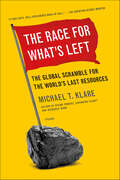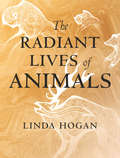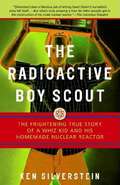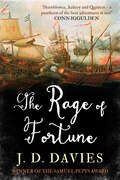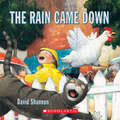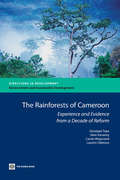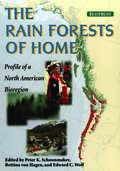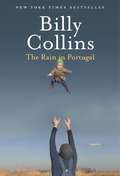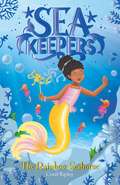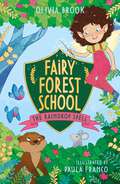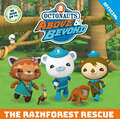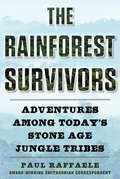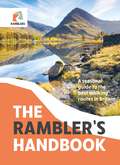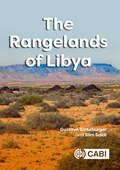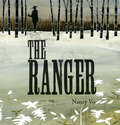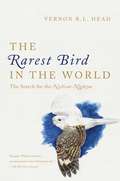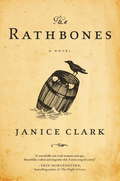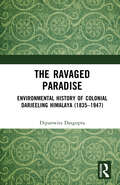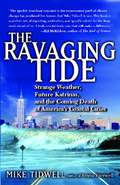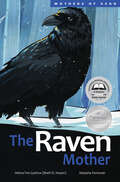- Table View
- List View
The Race for What's Left: The Global Scramble for the World's Last Resources
by Michael T. KlareFrom Michael Klare, the renowned expert on natural resource issues, an invaluable account of a new and dangerous global competitionThe world is facing an unprecedented crisis of resource depletion—a crisis that goes beyond "peak oil" to encompass shortages of coal and uranium, copper and lithium, water and arable land. With all of the planet's easily accessible resource deposits rapidly approaching exhaustion, the desperate hunt for supplies has become a frenzy of extreme exploration, as governments and corporations rush to stake their claim in areas previously considered too dangerous and remote. The Race for What's Left takes us from the Arctic to war zones to deep ocean floors, from a Russian submarine planting the country's flag on the North Pole seabed to the large-scale buying up of African farmland by Saudi Arabia, China, and other food-importing nations.As Klare explains, this invasion of the final frontiers carries grave consequences. With resource extraction growing more complex, the environmental risks are becoming increasingly severe; the Deepwater Horizon disaster is only a preview of the dangers to come. At the same time, the intense search for dwindling supplies is igniting new border disputes, raising the likelihood of military confrontation. Inevitably, if the scouring of the globe continues on its present path, many key resources that modern industry relies upon will disappear completely. The only way out, Klare argues, is to alter our consumption patterns altogether—a crucial task that will be the greatest challenge of the coming century.
The Radiant Lives of Animals
by Linda HoganFrom a celebrated Chickasaw writer, a spiritual meditation, in prose and poetry, on our relationship to the animal world, in an illustrated gift package.Concerned that human lives and the natural world are too often defined by people who are separated from the land and its inhabitants, Indigenous writer and environmentalist Linda Hogan depicts her own intense relationships with animals as an example we all can follow to heal our souls and reconnect with the spirit of the world. From her modest forest home in Colorado, and venturing throughout the region, especially to her beloved Oklahoma, she introduces us to horses, packrats, snakes, mountain lions, elks, wolves, bees, and so many others whose presence has changed her life. In this illuminating collection of essays and poems, lightly sprinkled with elegant drawings, Hogan draws on many Native nations' ancient stories and spiritual traditions to show us that the soul exists in those delicate places where the natural world extends into human consciousness--in the mist of morning, the grass that grew a little through the night, the first warmth of this morning's sunlight. Altogether, this beautifully packaged gift is a reverential reminder for all of us to witness and appreciate the radiant lives of animals.
The Radioactive Boy Scout: The Frightening True Story of a Whiz Kid and His Homemade Nuclear Reactor
by Ken SilversteinThrowing caution to the wind, David Hahn plunged into a new project: building a model nuclear reactor in his backyard garden shed. Posing as a physics professor, David solicited information on reactor design from the U.S. government and from industry experts. Following blueprints he found in an outdated physics textbook, David cobbled together a crude device that threw off toxic levels of radiation. His wholly unsupervised project finally sparked an environmental emergency that put his town's forty thousand suburbanites at risk. The EPA ended up burying his lab at a radioactive dump site in Utah. This offbeat account of ambition and, ultimately, hubris has the narrative energy of a first-rate thriller.
The Rage of Fortune (The Matthew Quinton Journals)
by J. D. DaviesThis prequel to the &“excellent&” Matthew Quinton Journals series reveals the legacy of the Royal Navy captain (Publishers Weekly). In 1651, eleven-year-old Matthew Quinton and his twin sister Henrietta discover long-forgotten papers of their grandfather. Dating back to 1598, they show the children an England locked into a bitter war with Spain. But their findings are interrupted by the arrival of Roundhead troops intent on searching for their elder brother, the tenth Earl of Ravensden, who has been seriously wounded in the Cavalier cause. Back in the present of 1651, England&’s enemies are closer to home, with the country gripped by civil war. Now the Roundheads are closing in . . . Set against the backdrop of real historical events The Rage of Fortune is a window into Mathew Quinton&’s origins. Praise for the writing of J. D. Davies: &“Hornblower, Aubrey and Quinton—a pantheon of the best adventures at sea!&” —Conn Iggulden, #1 New York Times–bestselling author of The Conqueror and War of the Roses series &“A hero worth rooting for.&” —Publishers Weekly &“Utterly impossible to put down . . . Finely-shaded characters, excellent plotting, gut-clenching action and immaculate attention to period detail . . . Superb.&” —Angus Donald, author of The Outlaw Chronicles series &“Destined to be a classic of nautical adventure series.&” —Eric Jay Dolin, author of Leviathan and Fur, Fortune, and Empire &“A naval adventure that goes well beyond the usual outlines of the genre to paint a lively portrait of England in the 1600s.&” —Kirkus Reviews
The Rain Came Down
by David ShannonCaldecott Honor artist David Shannon captures the chaos that follows an unexpected downpour in this engaging story.Once upon a sunny day, the sky clouded over, and the rain came down. The chickens squawked, the dog barked, the baby cried, the traffic snarled, the groceries fell, the people bickered, and still, the rain came down.In pictures full of wit and good-natured humor, Caldecott Honor artist David Shannon captures the chaos that follows an unexpected downpour.Rain or shine, here is an engaging story that will brighten the day of any reader.
The Rain Forests of Cameroon: Experience and Evidence from a Decade of Reform
by Carole Megevand Giuseppe Topa Laurent Debroux Alain KarsentyStarting in 1994, Cameroon introduced regulatory and market-based reforms to regulate access to its rainforests, balance public and private interests in those forests, and integrate wider economic, cultural, and environmental perspectives of the value of forests. Based on historical data and extensive interviews, this report concludes that the reforms brought order over the most aggressively competing interests and started to address deeper social and environmental issues, but a significant unfinished agenda remains. On the positive side, information on the boundaries, ownership, use rights, and management of Cameroon's rainforests has become available for public scrutiny, along with information on detection and prosecution of illegal activities. Better and better known rules of the game have improved forest governance and collaboration between forest institutions and civil society. More than 60 percent of Cameroon's rainforests are under management systems that emphasize sustainability. Illegal logging has declined sharply managed parks and production forests, although it persists in rural areas. The restructured forest industry has adopted internationally recognized management practices that have started to align logging with the forest's capacity to regenerate. Cameroon has established rules to preserve customary rights to forests, and community forests have progressed despite unanticipated challenges. Yet further reform is needed. Deeper recognition of the customary rights of all people who depend on Cameroon's forests, regardless of ethnicity, is vital. Timber and nontimber forest products like medicinal plants and bush meat remain subject to illegal exploitation outside state forests. Cameroon needs qualified eco-investors to sustain conservation and diminish reliance on timber production. Community involvement in the management of all types of forests should expand further. Great attention to local markets and small firms will strengthen forest governance and the forest industry in important ways. Rewarding responsible corporate behavior with more lenient bank guarantees and tax incentives may prove as important for conserving forests as punishing corporate misbehavior.
The Rain Forests of Home: Profile Of A North American Bioregion
by Jerry F. Franklin Patricia Marchak Peter Schoonmaker Edward C. Wolf Bettina Von HagenStretching from the redwoods of California to the vast stands of spruce and hemlock in southeast Alaska, coastal temperate rain forests have been home to one of the highest densities of human settlements on the continent for thousands of years. However, the well-being of this region is increasingly threatened by diminishing natural capital, declining employment in traditional resource-based industries, and outward migration of young people to cities.The Rain Forests of Home brings together a diverse array of thinkers -- conservationists, community organizers, botanists, anthropologists, zoologists, Native Americans, ecologists, and others -- to present a multilayered, multidimensional portrait of the coastal temperate rain forest and its people. Joining natural and social science perspectives, the book provides readers with a valuable understanding of the region's natural and human history, along with a vision of its future and strategies for realizing that vision.Authors describe the physical setting and examine the geographic and evolutionary forces that have shaped the region since the last glacial period, with individual chapters covering oceanography, climate, geologic processes, vegetation, fauna, streams and rivers, and terrestrial/marine interactions. Three chapters cover the history of human habitation, and the book concludes with an exploration of recent economic, political, and cultural trends.Interspersed among the chapters are compelling profiles of community-level initiatives and programs aimed at restoring damaged ecosystems, promoting sustainable use of resources, and fostering community-based economic development. The Rain Forests of Home offers for the first time a unified description of the characteristics, history, culture, economy, and ecology of the coastal temperate rain forest. It is essential reading for anyone who lives in or cares about the region.
The Rain in Portugal: Poems
by Billy CollinsFrom former U.S. Poet Laureate Billy Collins comes a twelfth collection of poetry offering nearly fifty new poems that showcase the generosity, wit, and imaginative play that prompted The Wall Street Journal to call him "America's favorite poet." The Rain in Portugal--a title that admits he's not much of a rhymer--sheds Collins's ironic light on such subjects as travel and art, cats and dogs, loneliness and love, beauty and death. His tones range from the whimsical--"the dogs of Minneapolis . . . / have no idea they're in Minneapolis"--to the elegiac in a reaction to the death of Seamus Heaney. A student of the everyday, here Collins contemplates a weather vane, a still life painting, the calendar, and a child lost at a beach. His imaginative fabrications have Shakespeare flying comfortably in first class and Keith Richards supporting the globe on his head. By turns entertaining, engaging, and enlightening, The Rain in Portugal amounts to another chorus of poems from one of the most respected and familiar voices in the world of American poetry. On Rhyme It's possible that a stitch in time might save as many as twelve or as few as three, and I have no trouble remembering that September has thirty days. So do June, November, and April. I like a cat wearing a chapeau or a trilby, Little Jack Horner sitting on a sofa, old men who are not from Nantucket, and how life can seem almost unreal when you are gently rowing a boat down a stream. That's why instead of recalling today that it mostly pours in Spain, I am going to picture the rain in Portugal, how it falls on the hillside vineyards, on the surface of the deep harbors where fishing boats are swaying, and in the narrow alleys of the cities where three boys in tee shirts are kicking a soccer ball in the rain, ignoring the window-cries of their mothers.
The Rain in the Woods (Fountas & Pinnell Classroom, Guided Reading)
by Amber FitchNIMAC-sourced textbook. All Wet. See what you can find in the rain.
The Rainbow Seahorse: Book 7 (Sea Keepers #7)
by Coral RipleyGet ready to dance the night away! The Sea Keepers are invited to a masked ball in this magical story about saving our oceans. Emily, Grace and Layla are invited to the annual masked ball in an ancient sunken city where the seahorses perform a special dance. But when evil Effluvia sneaks into the party in disguise, she uses her bad magic to destroy the beautiful ruins. The Sea Keepers need to find a magic pearl to save the city. Can true love defeat evil in this exciting underwater adventure?
The Raindrop Spell: Book 1 (Fairy Forest School #1)
by Olivia BrookA brand-new fairy school series about helping animals and looking after nature, from the home of Rainbow Magic!Poppy Merrymoss is so excited to start at Oakwings Academy, a beautiful fairy school in the trunk of an old oak tree. There she'll learn about all the different types of magic that fairies use to help nature, and she'll discover what type of fairy she'll be when she grows up! But when evil Lady Nightshade puts a curse on the forest, stopping the adult fairies from making the magic seeds that create fairy dust, it's up to Poppy and her friends to save the forest! Can Poppy and her friends Ninad Cleardrop and Rose Seedpip stop Lady Nightshade and rescue a little lost otter?Look out for Poppy Merrymoss's next adventure, Fairy Forest School: Baby Bunny Magic.
The Rainforest Book (Conservation for Kids)
by Charlotte MilnerEmbark on a journey through the magical world of the rainforest and introduce little nature-lovers to an enchanting, yet threatened, tropical worldStep inside the fascinating world of tropical rainforests where you&’ll encounter an enormous variety of flora and fauna! This gorgeously illustrated picture book is a wonderful way to introduce kids to the world of nature and conservation.The rainforests are bursting with life! Sweep aside the liana vines, hop over the giant roots of the kapok tree, and discover magnificent tigers roaming the jungle. In this enchanting children&’s book, you&’ll discover amazing rainforest animals, learn about the diverse range of life-giving plants, and find out why the Amazon rainforest is known as the &“lungs&” of our Earth. This colorful children&’s book captures the spirit of the rainforest through its beautifully detailed illustrations by Charlotte Milner. It has simple, clear text that is accessible to less confident readers but a strong message about deforestation and climate change will captivate older readers too.Let&’s Explore!Venture into the depths of the tropical rainforest and uncover riveting facts about these marvels of nature. Did you know that the air in a rainforest feels wet because trees and plants release water that they don&’t need into the air? And that over half of our planet&’s wildlife live in the rainforest? The world&’s rainforests are packed with amazing creatures! From the nocturnal kinkajou to the stinky rafflesia flower – there is plenty to discover in this plant and animal encyclopedia. Perfect for kids aged 5-9 years, it also includes a fun gardening activity section with instructions on how to grow your own miniature rainforest at home.Complete the Series:Following on from The Bee Book, The Sea Book, and The Bat Book, these engaging plant and animal books highlight the important ecological issues faced by our planet. It&’s perfect for parents who want to encourage children to learn about ecology and remind them that it is up to us to care for our planet.
The Rainforest Rescue (Octonauts Above & Beyond #2)
by Official OctonautsThe Octonauts return with a new global mission - on land! Enlisting their intrepid friends from around the world as Octo-agents - and equipped with a new fleet of land-based Terra Gups - the Octonauts' work is as vital as ever. They will explore far-flung environments, rescue animals that need their help and protect the land and all living creatures.Featuring everyone's favourites from the original series, such as Captain Barnacles and Kwazii Cat, OCTONAUTS: ABOVE AND BEYOND also introduces lovable new characters like Paani, the water scientist monkey - not to mention their cool new vehicle, the Octo-Ray! Together the crew embark on exciting missions to save animals everywhere who need their help.Each book includes a fact file about some of the amazing creatures featured in the story. Look out for book 2 in October 2023.
The Rainforest Survivors: Adventures Among Today's Stone Age Jungle Tribes
by Paul RaffaeleEven in our hyper-connected world, there are tribes scattered across the far reaches of the globe who still live much the same way that their ancestors did thousands of years ago. Having had minimal contact with the outside world, these peoples currently live in harmony and unison with the environment around them. But as technology grows and the human population expands, the way of life of these tribes becomes increasingly threatened with every passing day. In The Rainforest Survivors, veteran overseas reporter Paul Raffaele recounts his time spent with three unique jungle tribes—the peace-loving Congo Pygmies, New Guinea’s tree-dwelling Korowai cannibals, and the Amazon’s ferocious Korubo. Over months spent living in these three communities, Raffaele experienced firsthand wisdom and mysterious rites forged over many millennia. Resonating with high adventure and remarkable characters, The Rainforest Survivors details the daily lives of these relatively unknown peoples and provides key political and environmental context, showing how outside forces are closing in on them and threatening to change forever their ways of life. Enthralling and unforgettable, this compelling book is the important portrait of indigenous peoples living the way they have for centuries.
The Rambler's Handbook: A Seasonal Guide to the Best Walking Routes in Britain
by The Ramblers' AssociationDiscover the best of Britain's rambles, all year round.Britain is brimming with stunning walks, and this go-to guide sets out our 40 favourite routes around the UK. Arranged by season, each walk includes detailed route instructions, a map, and notes about landmarks and wildlife to keep an eye out for.Amble through bluebell-carpeted West Country woodlands in spring, and explore North Yorkshire's limestone slopes ablaze with wildflowers in early summer. Experience the fiery autumnal hues of the Wye Valley forest, or take a winter walk to see the fallow deer in Richmond Park.We've included a beautiful selection of varied walks all over the UK, from short country strolls to challenging hill hikes, gentle woodland wanders to breathtaking cliff-path adventures, there are routes to cater for all levels of fitness and experience.So, pack your bag, grab your boots and join us for a ramble around our beautiful landscape.
The Rambler's Handbook: A Seasonal Guide to the Best Walking Routes in Britain
by The Ramblers' AssociationDiscover the best of Britain's rambles, all year round.Britain is brimming with stunning walks, and this go-to guide sets out our 40 favourite routes around the UK. Arranged by season, each walk includes detailed route instructions, a map, and notes about landmarks and wildlife to keep an eye out for.Amble through bluebell-carpeted West Country woodlands in spring, and explore North Yorkshire's limestone slopes ablaze with wildflowers in early summer. Experience the fiery autumnal hues of the Wye Valley forest, or take a winter walk to see the fallow deer in Richmond Park.We've included a beautiful selection of varied walks all over the UK, from short country strolls to challenging hill hikes, gentle woodland wanders to breathtaking cliff-path adventures, there are routes to cater for all levels of fitness and experience.So, pack your bag, grab your boots and join us for a ramble around our beautiful landscape.
The Rangelands of Libya
by Gustave Gintzburger Slim SaïdiLibya remains a land of mysteries with a harsh arid climate, a land rich in millenaries of troubled history, a land where the Sahara meet the Mediterranean Sea, a land where the West and the East Mediterranean merge. Libya is also a land where the desert and the sown intermingle in the steppe country where the rainfall is unpredictable, the soils are poor, rocky, saline, rendering rainfed cultivation hazardous, where grazing and rainfed cropping remained for long the only viable agricultural options. Over the past 60 years, oil resources allowed gigantic agricultural development projects, urbanization, road network expansion and well drilling. This changed the ways of life of rural populations, impacting and undoubtedly altering rangelands conditions and systems, as well as native vegetation cover, wildlife and land use. This book reviews the past and current environmental and agricultural condition of the Libyan rangelands with example of how territories and resources are used by tribal communities. It describes, explains and illustrates the landscapes, the vegetation, the wildlife, the rainfed cereal systems and livestock systems, the reasons for the rampant overstocking, the relentless land clearing for hazardous cropping and uncertain irrigation projects, the wild fuelwood collection and charcoal manufacturing, triggering land degradation and desertification. Long-tested rangeland recovery and rehabilitation techniques in Libya are reviewed using appropriate plant material and proven establishment techniques with successes and failures assessed. This book is offered in hopes of a better future for the Libyan people and the whole Mediterranean arid regions from Morocco to Pakistan.
The Ranger (The Crow Stories Trilogy #2)
by Nancy VoIn this second book in Nancy Vo’s Crow Stories trilogy, a ranger and a fox form a special and unexpected friendship while navigating an indifferent and dangerous wilderness. In this memorable and beautifully illustrated story, a ranger comes across a fox caught in a trap. The ranger frees the fox and promises only to tend to its wounds. The fox recovers and remains curiously close to the ranger, and when unexpected twists occur, the fox ends up being the helper. The ranger asks the fox, “Does this make us even?” and almost immediately feels regret—keeping score has no place in friendship. And so the two continue their journey together. In this second book in the Crow Stories trilogy, Nancy Vo explores themes of friendship and how meaningful bonds form when we can openly give and receive. Vo’s stunning, spare illustrations are a delight, and complement the journey of these two nuanced characters toward understanding and companionship. Correlates to the Common Core State Standards in English Language Arts: CCSS.ELA-LITERACY.RL.1.2 Retell stories, including key details, and demonstrate understanding of their central message or lesson.
The Rarest Bird in the World: The Search for the Nechisar Nightjar
by Vernon R HeadPart detective story, part love affair, and pure adventure storytelling at its best, a celebration of the thrill of exploration and the lure of wild places during the search for the elusive Nechisar Nightjar. In 1990, a group of Cambridge scientists arrived at the Plains of Nechisar in Ethiopia. On that expedition, they collected more than two dozen specimens, saw more than three hundred species of birds, and a plethora of rare butterflies, dragonflies, reptiles, mammals, and plants. As they were gathering up their findings, a wing of an unidentified bird was packed into a brown paper bag. It was to become the most famous wing in the world. This wing would set the world of science aflutter. Experts were mystified. The wing was entirely unique. It was like nothing they had ever seem before. Could a new species be named based on just one wing? After much discussion, a new species was announced: Nechisar Nightjar, or Camprimulgus Solala, which means "only wing." And so birdwatchers like Vernon began to dream. Twenty-two years later, he joins an expedition of four to find this rarest bird in the world. In this gem of nature writing, Vernon captivates and enchants as he recounts the searches by spotlight through the Ethiopian plains, and allows the reader to mediate on nature, exploration, our need for wild places, and the human compulsion to name things. Rarest Bird is a celebration of a certain way of seeing the world, and will bring out the explorer in in everyone who reads it.
The Rathbones
by Janice ClarkA gothic, literary adventure set in New England, Janice Clark's haunting debut chronicles one hundred years of a once prosperous and now crumbling whaling family, told by its last surviving member.Mercy Rathbone, fifteen years old, is the diminutive scion of the Rathbone clan. Her father, the last in the beleaguered dynasty, has been lost at sea for seven years - ever since the last whale was seen off the coast of Naiwayonk, Connecticut. Mercy's memories of her father grow dimmer each day, and she spends most of her time in the attic hideaway of her reclusive uncle Mordecai, who teaches her the secrets of Greek history and nautical navigation through his collection of specimens and moldering books. But when a strange, violent visitor turns up one night, Mercy and Mordecai are forced to flee the crumbling mansion and set sail on a journey that will bring them deep into the haunted history of the Rathbone family, and the reasons for its undoing.As Mercy and Mordecai sail from island to island off the Connecticut coast, encountering dangers and mysteries, friends and foes, they untangle the knots of the Rathbone story, discovering secrets long encased in memory. They learn the history of the family's founder and patriarch, Moses Rathbone, and the legendary empire he built of ships staffed with the sons of his many, many wives. Sons who stumbled in their father's shadow, distracted by the arrival of the Stark sisters, a trio of "golden" girls, whose mesmerizing beauty may have sparked the Rathbone's decline.From the depths of the sea to the lonely heights of the widow's walk; from the wisdom of the worn Rathbone wives to the mysterious origins of a sinking island, Mercy and Mordecai's journey will bring them to places they never thought possible. But will they piece together a possible future from the mistakes of the past, or is the once great family's fate doomed to match that of the whales themselves?Inspired by The Odyssey by way of Edgar Allan Poe and Moby Dick, The Rathbones is an ambitious, mythic, and courageous tour de force that marks the debut of a dazzling new literary voice.
The Ravaged Paradise: Environmental History of Colonial Darjeeling Himalaya (1835–1947)
by Dipanwita DasguptaThis book makes a systematic attempt to explore the environmental history of Darjeeling during the British colonial period (1835-1947), which profoundly transformed the environment of Darjeeling by introducing commercial control over the natural resources. After the foundation of Darjeeling as the hill station for the low-income groups of British administration living in Bengal and Burma, the place was transformed into a social, recreational and commercial centre for the British authorities. The railway construction boom, introduction of tea plantation, the growth of a commercial market for timber and increasing demands for fuel and building materials depleted the forest cover. The less explored regions of Darjeeling attracted the adventure-thirsty Britons. A series of investigations were made on the marketable products, the condition of roads, and quality of soil of these regions. The ethnographic, geological, botanical and zoological study of the Darjeeling was started by the colonial officials in the nineteenth century. In the early stage of expansion of colonialism in Asia, Africa, Australia and South America, the European colonizers faced numerous problems in dealing with the untouched nature. The accumulation of the knowledge of surrounding regions and proper management of the labour became essential for the colonial authority for transformation of the existing environment of the densely forested tropical colonies. Taylor and Francis does not sell or distribute the print editions of this book in India, Pakistan, Nepal, Bhutan, Bangladesh and Sri Lanka.
The Ravaging Tide: Strange Weather, Future Katrinas, and the Coming Death of America's Coastal Cities
by Mike TidwellIf, like many Americans, you believe the ongoing tragedy of Hurricane Katrina was a once-in-a-lifetime fluke, you need to read this book. In the coming years and decades, the safety of your region, your town, your home may depend on the warnings you'll encounter on these pages. That's because the exact same conditions that created the Katrina catastrophe and destroyed New Orleans are being replicated right now along virtually every inch of U. S. coastline. In The Ravaging Tide, Mike Tidwell, a renowned advocate for the environment and an award-winning journalist, issues a call to arms and confronts us with some unsettling facts. Consider: In the next seventy-five years, much of the Florida peninsula could lie under ocean water. So could much of Lower Manhattan, including all of the hallowed ground zero area. Major hurricanes like Katrina, scientists say, are becoming much more frequent and more powerful. Glacier National Park in Montana will have to change its name, as it is rapidly losing all of its thirty-five remaining glaciers. The snows atop Mt. Kilimanjaro in Africa, so memorably evoked in the Hemingway story, have already disappeared. The fault, Tidwell argues, lies mostly with the U. S. government and the energy choices it has encouraged Americans to make over the decades. Those policies are now actively bringing rising seas and gigantic hurricanes -- the lethal forces that killed the Big Easy -- crashing into every coastal city in the country and indeed the world. The Bush administration's own reports and studies (some of which it has tried to suppress) explicitly predict more intense storms and up to three feet of sea-level rise by 2100 due to planetary warming. The danger is clear: Whether the land sinks three feet per century (as in New Orleans over the past 100 years) or sea levels rise three feet per century (as in the rest of the world over the next 100 years), the resulting calamity is the same. Although Mike Tidwell sounds the clarion in The Ravaging Tide, this is ultimately an optimistic book, one that offers a clear path to a healthier and safer world for us and our descendants. He writes of trend-setting U. S. states like New York and California that are actively cutting greenhouse gases. And he heeds his own words: In one delightful personal chapter, he takes us on a tour of his suburban Washington, D.C., home and demonstrates how he and many of his neighbors have weaned themselves from the fossil-fuel lifestyle. Even when the government is slow to change, there are steps we as families can take to, yes, change the world.
The Raven Mother (Mothers of Xsan)
by Hetxw'ms Gyetxw Huson★ Starred selection for CCBC's Best Books for Kids & Teens 2023! Hoarders. Scavengers. Clever foragers. Bringers of new life. Ravens have many roles, both for the land and in Gitxsan story and song. The sixth book in Hetxw'ms Gyetxw (Brett D. Huson)’s Mothers of Xsan series transports young readers to Northwestern British Columbia, where they will learn about the traditions of the Gitxsan, the lives of ravens, and why these acrobatic flyers are so important to their ecosystem. Follow along as Nox Gaak, the raven mother, teaches her chicks what they need to survive with the help of her flock.
The Raven Mother (Mothers of Xsan)
by Hetxw’ms Gyetxw Huson★ Starred selection for CCBC's Best Books for Kids & Teens 2023! Hoarders. Scavengers. Clever foragers. Bringers of new life. Ravens have many roles, both for the land and in Gitxsan story and song. The sixth book in Hetxw'ms Gyetxw (Brett D. Huson)&’s Mothers of Xsan series transports young readers to Northwestern British Columbia, where they will learn about the traditions of the Gitxsan, the lives of ravens, and why these acrobatic flyers are so important to their ecosystem. Follow along as Nox Gaak, the raven mother, teaches her chicks what they need to survive with the help of her flock.
The Raven Mother (Mothers of Xsan)
by Hetxw’ms Gyetxw Huson★ Starred selection for CCBC's Best Books for Kids & Teens 2023! Hoarders. Scavengers. Clever foragers. Bringers of new life. Ravens have many roles, both for the land and in Gitxsan story and song. The sixth book in Hetxw'ms Gyetxw (Brett D. Huson)&’s Mothers of Xsan series transports young readers to Northwestern British Columbia, where they will learn about the traditions of the Gitxsan, the lives of ravens, and why these acrobatic flyers are so important to their ecosystem. Follow along as Nox Gaak, the raven mother, teaches her chicks what they need to survive with the help of her flock.
